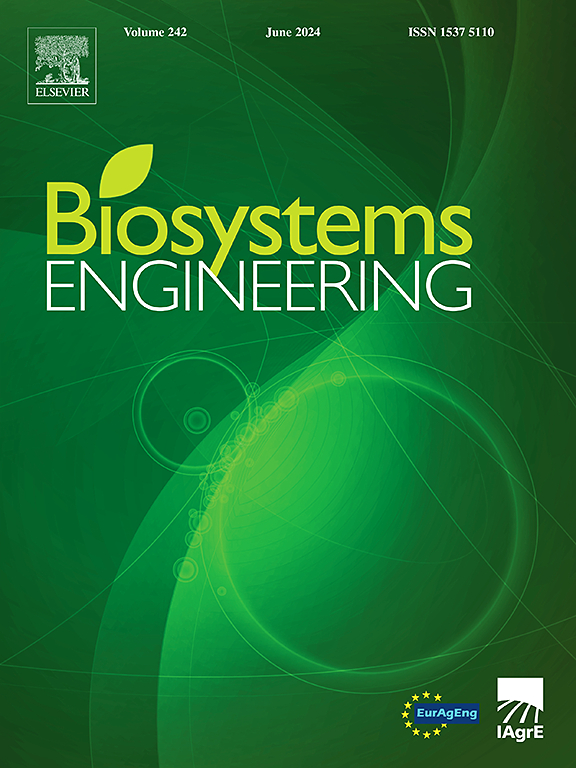Development of a hydraulic variable-diameter threshing drum control system for combine harvester part I: Adaptive monitoring method
IF 4.4
1区 农林科学
Q1 AGRICULTURAL ENGINEERING
引用次数: 0
Abstract
Traditional cereal combine harvesters cannot adjust the threshing gap according to the change of feeding rate, leading to large threshing losses. Previous research has developed a hydraulic variable-diameter threshing drum, which adjusts the threshing gap by changing the drum diameter. However, the oil pressure within and without the rod cavity of the hollow hydraulic cylinder for the threshing drum is affected by both the feeding rate and threshing gap in these systems. The correlation model between the independent variables (feeding rate and threshing gap) and the response values (threshing performance and oil pressure) has not yet been studied. Therefore, in this study, the relationship between the independent variables and the response values is studied by using the test method of central composite rotatable design (CCRD). The results showed that under the optimal threshing gap corresponding to different feeding rates, the threshold of oil pressure change within rod cavity was approximately 0.64–0.78 MPa, with a variation of <0.14 MPa. Therefore, an adaptive monitoring method based on constant oil pressure is proposed, which could keep the oil pressure within the rod cavity in the threshold range by adjusting the threshing gap. This minimised the entrainment loss rate under different feeding rates.
求助全文
约1分钟内获得全文
求助全文
来源期刊

Biosystems Engineering
农林科学-农业工程
CiteScore
10.60
自引率
7.80%
发文量
239
审稿时长
53 days
期刊介绍:
Biosystems Engineering publishes research in engineering and the physical sciences that represent advances in understanding or modelling of the performance of biological systems for sustainable developments in land use and the environment, agriculture and amenity, bioproduction processes and the food chain. The subject matter of the journal reflects the wide range and interdisciplinary nature of research in engineering for biological systems.
 求助内容:
求助内容: 应助结果提醒方式:
应助结果提醒方式:


